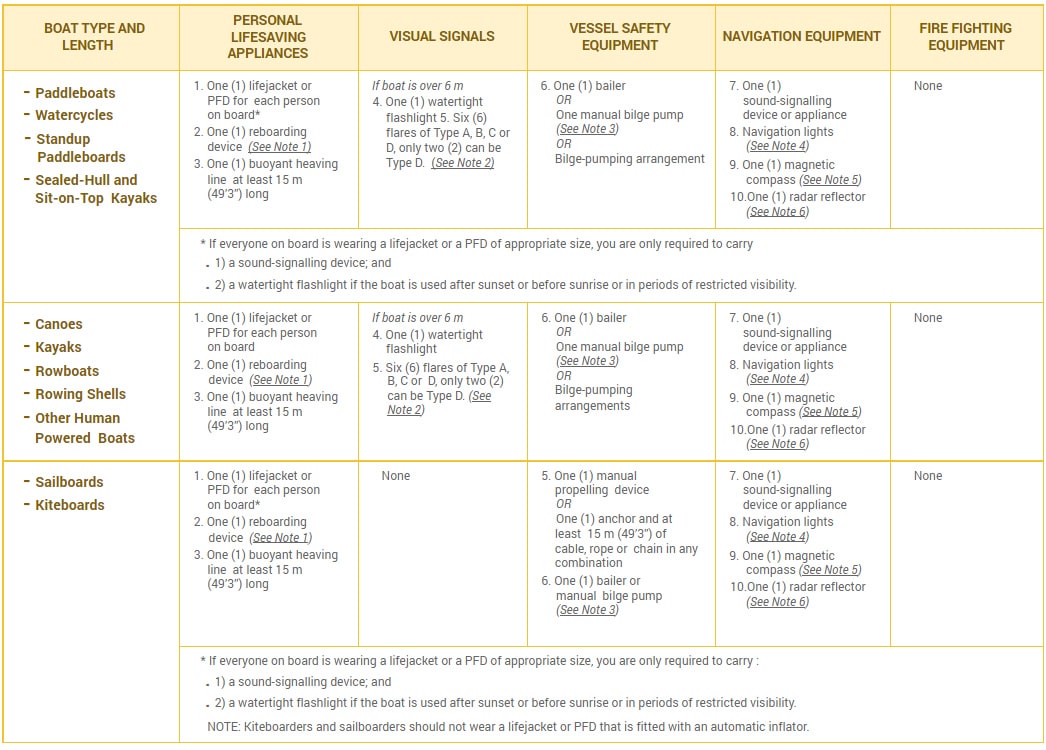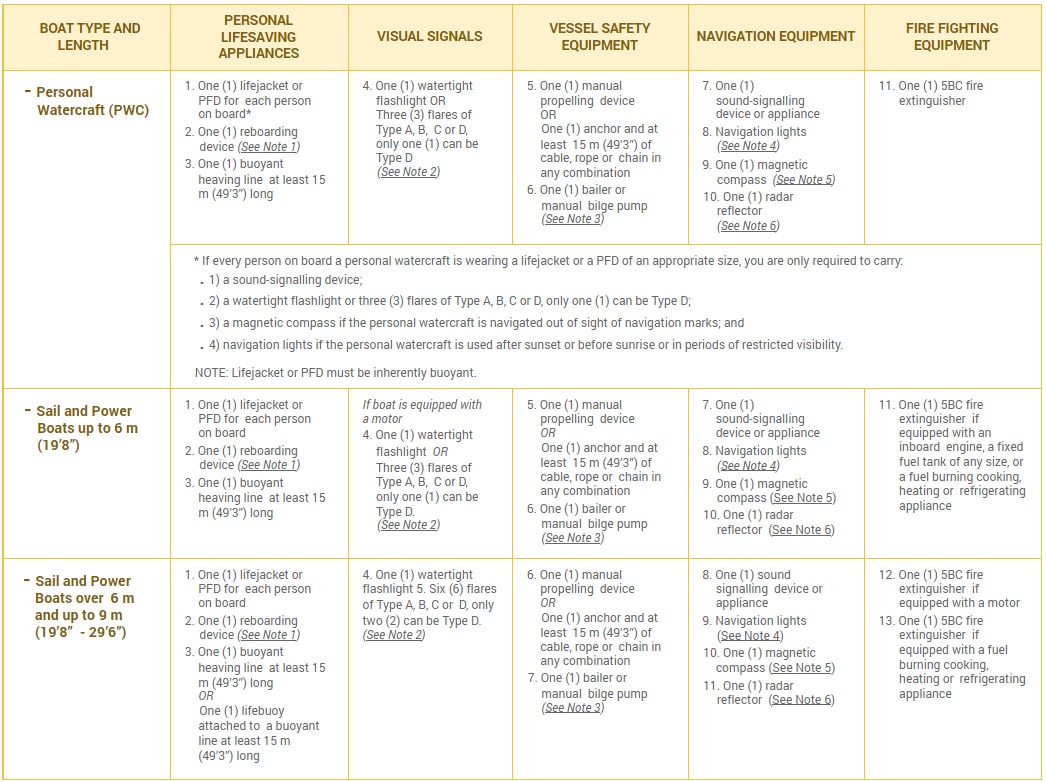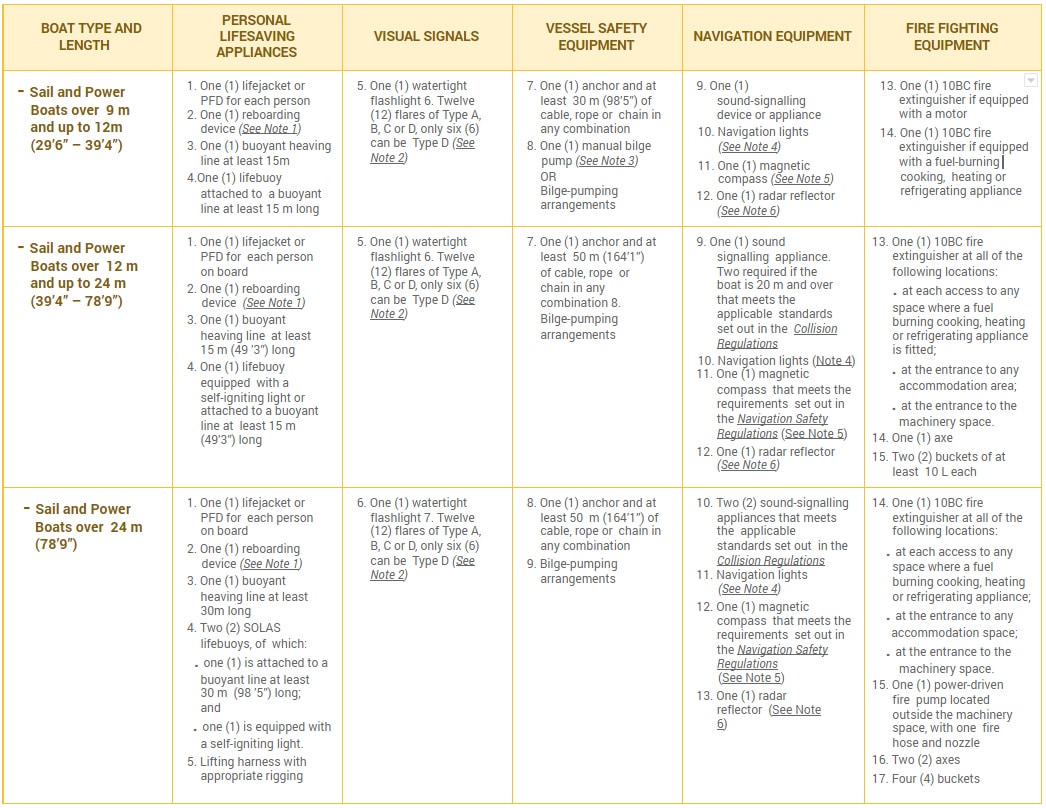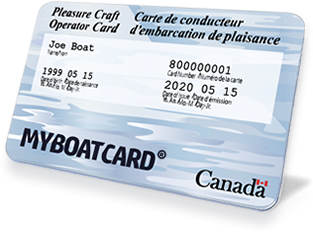Required Safety Equipment
Below is the safety equipment required by vessel type and length:



Note 1 – Reboarding Device
A reboarding device is only required if the vertical height that a person must climb to reboard the boat from the water (freeboard) is over 0.5m.
Note 2 – Flares
Flares are not required for a boat that:
- is operating on a river, canal or lake in which it can never be more than one (1) nautical mile (1.852 km) from shore; or
- has no sleeping quarters and is engaged in an official competition or in final preparation for an official competition.
The number of flares required may be reduced by 50 percent (the number of smoke signals cannot exceed 50% of the number of smoke signals given in the tables above) if the boat has one of the following:
- A means of two-way communication*;
- A 406 MHz personal locator beacon** that is worn by the boat operator; or
- A 406 MHz emergency position-indicating radio beacon***.
* The means of two-way communication may include a Very High Frequency (VHF) marine radio, a satellite telephone or a cell phone (if the VHF radio or the cell phone is located in a coverage area.)
** A 406 MHz personal locator beacon (PLB) must meet the requirements under the Radiocommunication Act. All Canadian coded PLBs should be registered with the Canadian Beacon Registry at https://www.cbr-rcb.ca/cbr/
*** A 406 MHz emergency position-indicating radio beacon (EPIRB) must meet the requirements of the Ship Station Radio Technical Regulations and must also be registered with the Canadian Beacon Registry. See above.
Note 3 – Bailer and Manual Bilge Pump
A bailer or manual bilge pump is not required for a boat that cannot hold enough water to make it capsize or a boat that has watertight compartments that are sealed and not readily accessible.
Note 4 – Navigation Lights
Navigation lights are only required if you operate the boat after sunset, before sunrise or in periods of restricted visibility (fog, falling snow, etc.).
Note 5 – Magnetic Compass
A magnetic compass is not required if the boat is 8 m (26’3”) or less and you operate it within sight of navigation marks.
Note 6 – Radar Reflector
Radar reflectors are required for boats under 20 m (65’7”) and boats built of mostly non-metallic materials. A radar reflector is not required if:
- the boat is used in limited traffic conditions, daylight and favourable environmental conditions, and where having a radar reflector is not essential to the boat’s safety; or
- the small size of the boat or its operation away from radar navigation makes it impossible to install or use a radar reflector.
Other Exceptions to Equipment Requirements
There are further exceptions to the required equipment for specific vessel types. Additional information on the following exceptions can be found in Section 2 Subparts 3, 4, and 5 of the Canadian Small Vessel Regulations.

